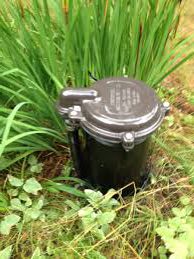How Much 35% Hydrogen Peroxide To Use In Well Disinfection
The amount of 35% Hydrogen Peroxide to use when disinfecting or cleaning a well will depend on a few factors.
- The depth of the well.
- The water level.
- The diameter of the well.
- What contaminants are present.
- The amount of each contaminant.
- The construction material of the well components.
Each well has it’s own properties and amounts of sediment, contaminants and or minerals. This information is not intended to be a one size fits all well guide, rather general information to have before assessing and planning to disinfect your well or to have during a conversation with a professional in your area.
Disinfecting Well With 35% Hydrogen Peroxide Disclaimer
Please consult your well manufactures literature, material compatibility table and seek information before starting or prior to hiring a disinfection or water specialist. Do not attempt this yourself if you are unsure on how to do it or are unfamiliar with 35% Hydrogen Peroxide.
How Much 35% Hydrogen Peroxide do I use to disinfect my well?
So when I personally want to clean or disinfect a well with 35% Hydrogen Peroxide, I determine the amount of water in the well. I calculate the area of the well shaft, multiplied by pi 3.14 times the depth of the water.
Example: A standard well shaft diameter in my area is 10″. Next a well shaft may be say 130′ deep, however the water level may only be 20′ deep. Determining the actual water level is critical. There are plenty of ways to do this.
- First I convert everything into inches 20′ x 12 = 240″
- Area of a 10″ circle, radius squared multiplied by pi. 52 X 3.14 X 240″ = 18,840 cu/in. That’s 18,840 cubic/inches.
- 1 US gallon liquid equals = 231.00 cubic/inches.
- Divide 18,840 by 231 = 81.5 gallons.
I take into account the water which is actually in the pipes connecting the well to the house. I estimate how far my well is from the house and do the math. My main water pipe is 1″ diameter.
Example: 100′ to the house running 1′ diameter main water line.
I convert everything to inches, 100′ x 12= 1200″. 52 x 3.14 x 1200 ” = 942 cu/inches divide this by the 231 cu/inches (1 US gallon) = 4 .08 gallons.
Grand total (not including actual interior plumbing) rounding up 85.5 gallons of water in the example.
How Much 35% Hydrogen Peroxide You Ask?
What’s in your well?
Iron is commonly found in well water and Iron bacteria love to feed on iron. Iron bacteria is usually the source of the rotten egg smell in a faucet and water system. Hydrogen Sulfide is a by product of iron bacteria extracting energy from the iron.
In the example above – pouring 4 gallons of 35% Food Grade Hydrogen Peroxide into the well would bring the concentration to around 1.5% hydrogen peroxide. At this concentration disinfection would occur and copious amounts of oxygen would be liberated.
Careful attention must be paid to relieve pressure. Pressure build could cause the system to explode resulting in damage to the system and possible injury or death. Leaving the valves open is required. 1 gallon of 35% H2O2 in this example would result in around 0.4% H2O2. Hydrogen peroxide is effective as an antibacterial agent as well as deactivating virus. This may be a starting point in my personal opinion and less aggressive than 4 gallons.
Keep in mind I would by-pass all filtration systems and water softeners. Open each faucet drawing the hydrogen peroxide up to each faucet. Shut the well breaker off. Then monitor the pressure. PRESSURE WILL BUILD!
Slightly open each faucet a little bit or a lot and relieve the pressure as needed. To prevent siphoning opening the faucets that are at a level higher than others will ensure water remains in the pipes.
I let my system sit 20 – 24 hours or so. You will need to make decisions regarding your own system to relieve pressure.
Failing to relieve pressure could damage a system – obviously!
I then flush system with water. Turn the breaker on and open up the faucets and blow all the gunk out. Maintaining the system at around 25 ppm hydrogen peroxide at the faucets has proven good in my experience.
Things to avoid when using 35% Hydrogen Peroxide in a well
- Contact with carbon filters.
- Contact with rubber.
- Pressure build up.
- Contact with non compatible metals and materials.
This is general information and not a recommendation specific to your personal well. And should not be taken as advice. Analyzing a well water system must be done to gain knowledge prior to an application. Use this general information and formulation what will work best for you. And always if you are uncertain call a professional in your area and request they use hydrogen peroxide instead of chlorine.

